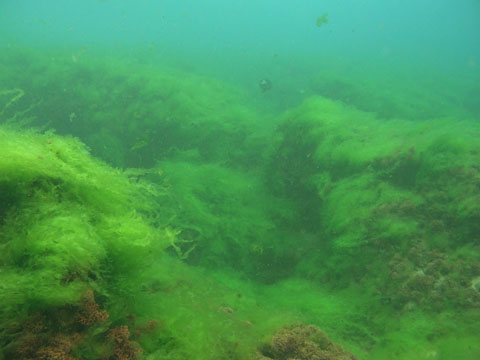Scientists have taken steps towards solving a thirty-year oceanographic puzzle, with the discovery that microscopic algae living in mid-ocean areas must be getting essential nutrients from as deep as 250 metres beneath the waves. But exactly how they are getting hold of nitrates from deep down remains a tantalizing mystery.
The study published in Nature, led by Ken Johnson from the Monterey Bay Aquarium Research Institute, provides some answers to the important question of how algae manage to flourish in areas of clear blue ocean where there are virtually no nutrients.
The team deployed a robotic drifter called an Apex float into waters off Hawaii. For two years it automatically bobbed up and down in the water column, between the surface and 1000 meters down, measuring oxygen and nitrate levels as it went.
They found that from January to October, concentrations of oxygen in the upper 100 metres gradually increased. At the same time, the concentration of nitrate in deeper waters, from 100 to 250 metres, decreased. This suggests that algae in shallow water - where there is enough sunlight - are photosynthesising and producing oxygen, while somehow grabbing nutrients from deeper, darker waters. But how they do this, is not clear.
Johnson and the team suggest there could be dormant microalgae living in deeper waters that are occasionally stirred up into shallower waters by swirling eddie currents. Reaching around 70 metres they would mop up nutrients then perhaps continue on up into the sunlit shallows under their own steam - some algae can swim using tiny whip-like hairs and others can actively control their buoyancy, and choose whether to sink or float.
The next step will be to deploy Appex floats in other parts of the ocean to see what's going on elsewhere including the Southern Ocean where nitrate supplies and algae growth are both much higher than in mid-ocean areas.
Understanding more about how these mid-ocean algae grow is vitally important because they account for a fifth of the carbon dioxide uptake in all plants and algae on the planet, so they play a vital role in regulating global climate.
- Previous Plants can make decisions
- Next Smaller beaks for colder climates










Comments
Add a comment